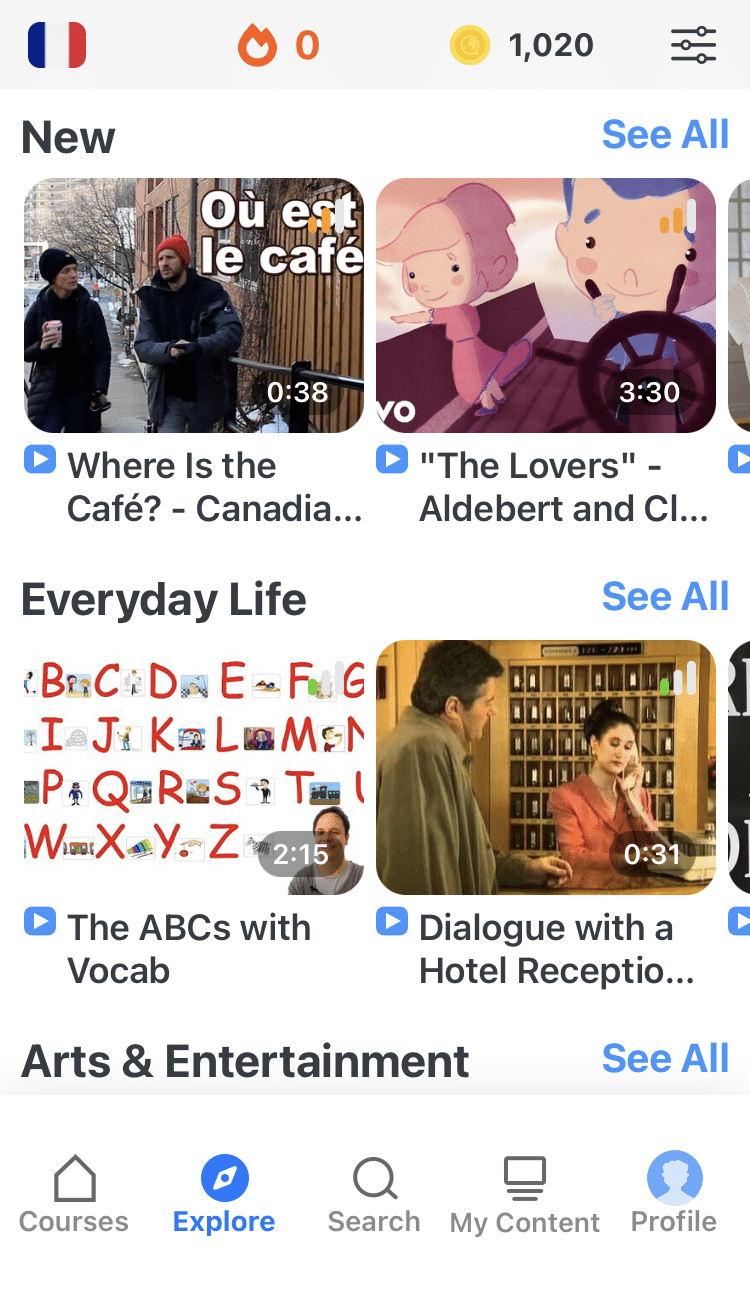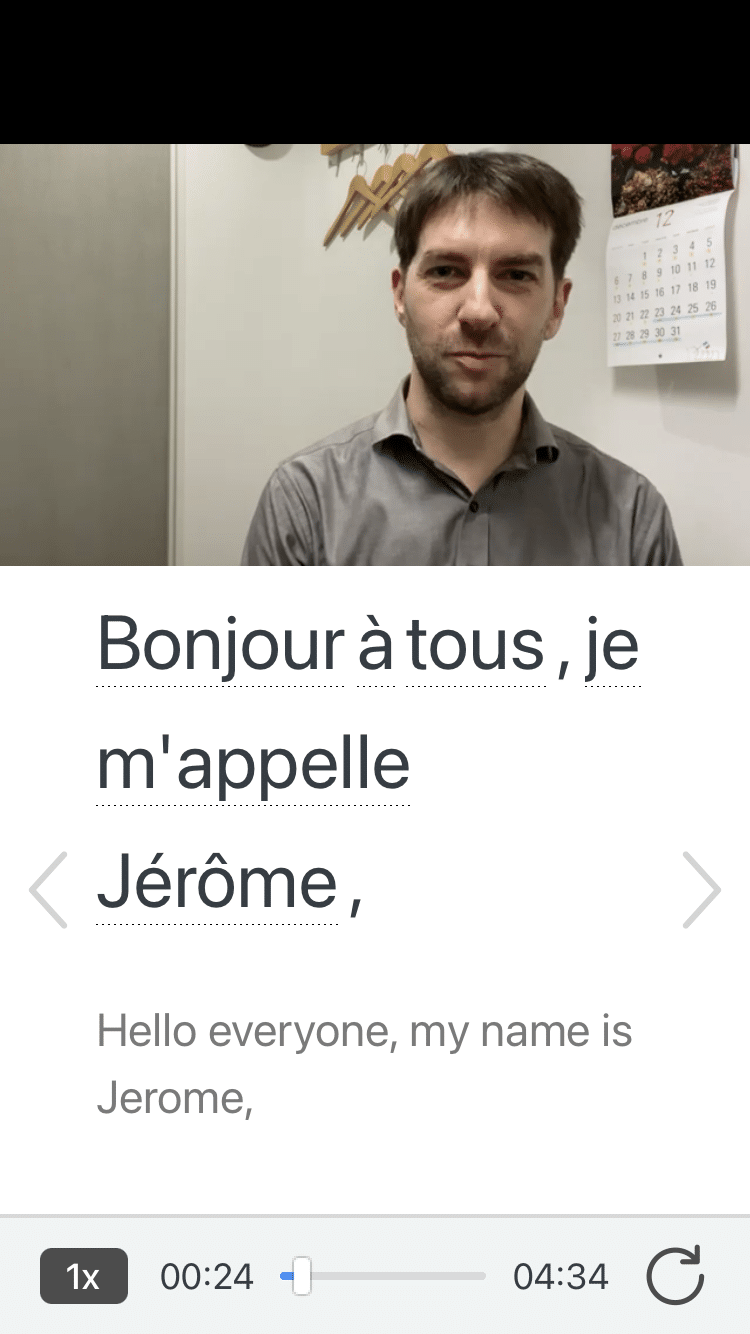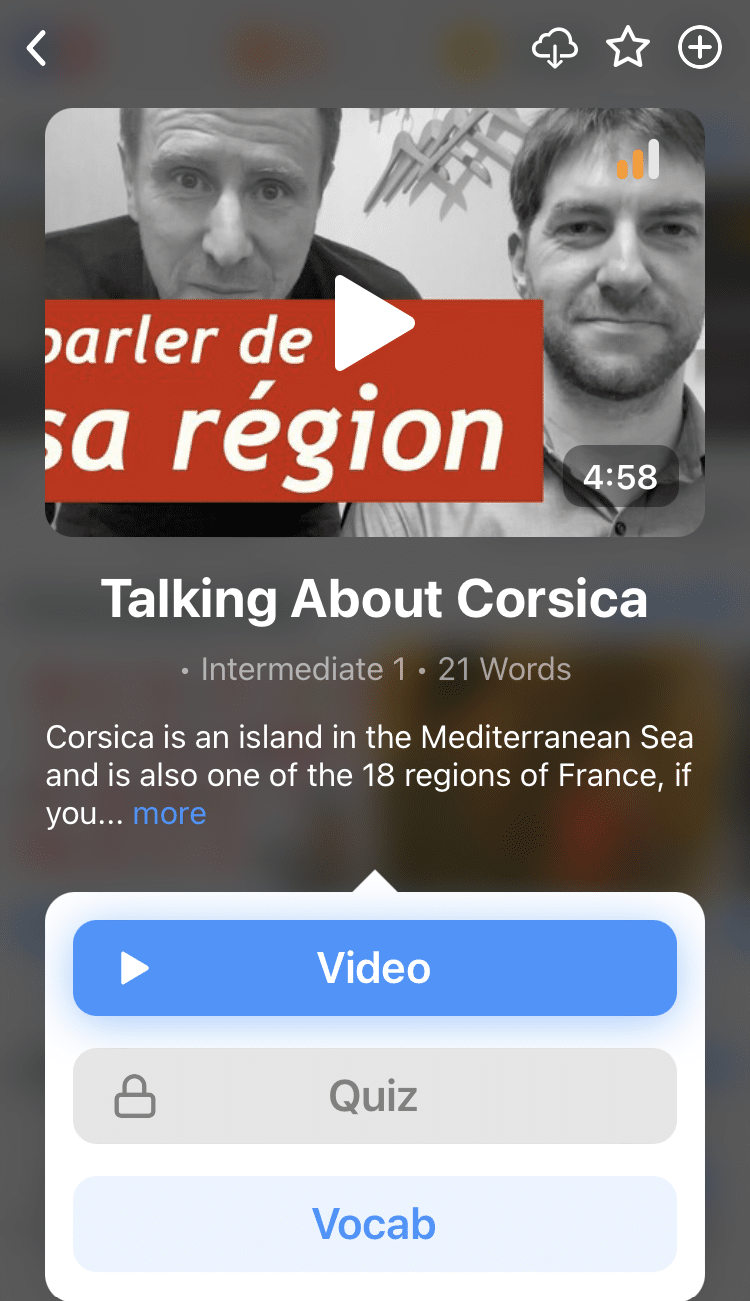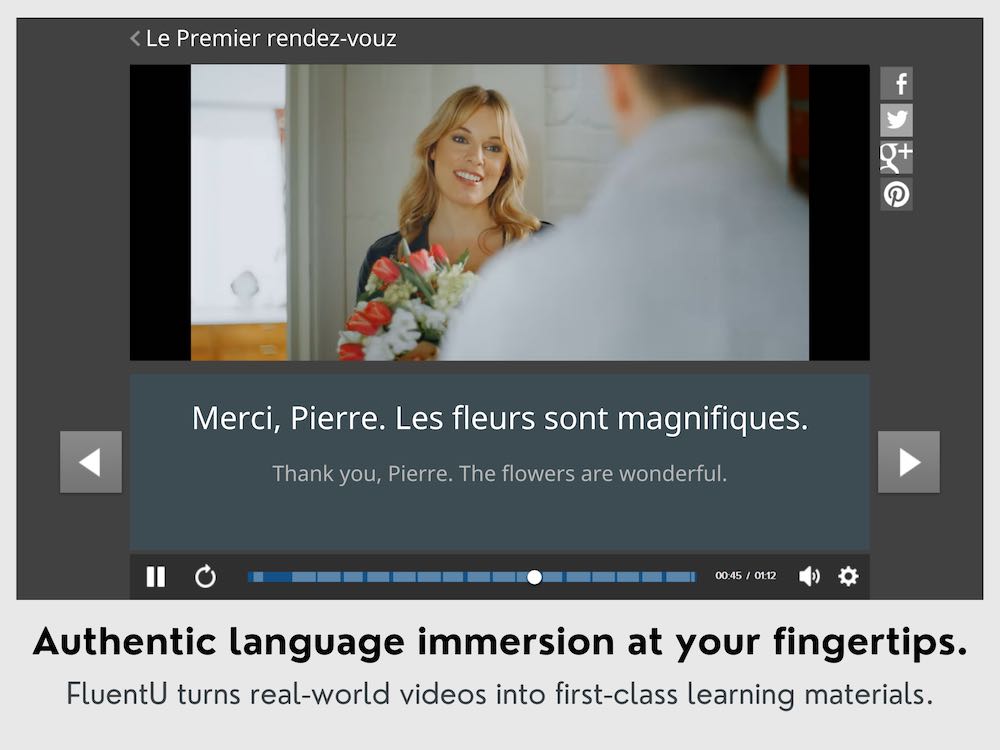
French Cooking Vocabulary
Looking for extra incentive to learn French vocabulary? It could be that you just need to connect with the culture.
And there may be no better way to do that than through food.
Mention France to anyone, and food is one of the first things that comes to mind.
Wines, cheeses, breads, veggies…you name it.
The French are so crazy about their food, it’s even seeped into their everyday language.
In addition to the motivation factor, there are some very good reasons to use cooking as a tool for picking up new French vocabulary.
Contents
- Why Learn French Vocabulary Through Cooking?
- There are specific words that are primarily used for cooking
- The French spend a lot of time cooking
- Learning vocab with recipes helps you lose your fear of the imperative mood applied to the causative
- Learning cooking vocabulary can deepen your understanding of French culture
- Recipes vary widely across France, resulting in lots and lots of vocab
- Many French foods aren’t widely available in the States
- How to Learn French Vocabulary Through Cooking
- Example: A Full Course Norman Lunch
- Now Get Cooking!
- And one more thing...
Download: This blog post is available as a convenient and portable PDF that you can take anywhere. Click here to get a copy. (Download)
Why Learn French Vocabulary Through Cooking?
There are specific words that are primarily used for cooking
Like in English, a set of words applies to cooking and not much else. Often, a single action is described by different verbs depending on whether or not the situation involves cooking. For example, étaler means to spread out something generally, but tartiner means to spread something food-related, like butter.
Such confusion also exists for nouns, cookware in particular. The English word “pot” can be translated as casserole if it has handles, marmite if it’s big and deep, fait-tout if it isn’t very deep, or simply pot if used for food storage. Such a rich vocabulary illustrates the importance of food in France.
The French spend a lot of time cooking
It may seem like reinventing the wheel learning a new set of vocab just for cooking. I mean, you could just use general words, and people will probably understand what you mean, but will you understand them? Will you be able to decipher restaurant menus or follow directions to cook something yourself? It’s best to commit some basic French cooking vocabulary to memory before you try to actually tackle a recette (recipe). More on that in just a moment.
Learning vocab with recipes helps you lose your fear of the imperative mood applied to the causative
French recipes frequently combine the imperative mood with the causative, an operation used to describe one person getting someone else to do something. In French, the causative starts with the verb faire (to do), which is followed by an infinitive. For example, “I made/had my brother prepare the meal” would be J’ai fait preparer le repas à mon frère.
Notice the presence of fait and à. In fact, recipes are one of many great real-world applications of the French you’re learning. You’ll often come across such verbs as…
faire chauffer — to heat (a food item)
faire revenir — to brown
faire cuire/frire — to cook/fry
faire dégorger — to eliminate excess water (in veggies)
faire lever — to leaven (use yeast to make dough rise)
faire macérer — to steep
faire mariner — to marinate
These are often employed in the imperative mood by using the causative. For example:
Faites chauffer le lait. (Heat up the milk.)
But you’re literally saying, “Have the milk heated up.” The causative can be a stumbling block for learners, so practice whenever you can.
Learning cooking vocabulary can deepen your understanding of French culture
French cuisine is notable not only for its unique qualities but also its extreme diversity. It’s amazing how many climates are packed into such a small country. You can go from alpine tundra to subtropics in a two-hour drive!
Recipes vary widely across France, resulting in lots and lots of vocab
It comes as no surprise then that the cuisine in each region depends on what can be grown in that environment. This concept is known as the terroir. Recipes and food packaging announce with pride that they’re du terroir.
Many French foods aren’t widely available in the States
Escargot aside, have you ever tried sole? How about truffles? Blackcurrants? These and many more exotic foods are common in France and will add an air of authenticity to any French-inspired meal.
FluentU takes authentic videos—like music videos, movie trailers, news and inspiring talks—and turns them into personalized language learning lessons.
You can try FluentU for free for 2 weeks. Check out the website or download the iOS app or Android app.
P.S. Click here to take advantage of our current sale! (Expires at the end of this month.)
How to Learn French Vocabulary Through Cooking
If you feel confident, French recipes (in French) are a great way to “test” your knowledge. (You’ll know if you understood the recipe at the first bite!)
I like to follow a recipe without translating anything. That means directly internalizing every ingredient, tool and process used. The best way to do this is to just dive in and read recipes, trying to decode unknown words from context.
Note that French recipes use the metric system (liters instead of cups, for example). Most cookware includes both systems, but here is a great resource for converting between English and metric quantities when cooking.
As for finding recipes, they’re widely available online. Marmiton.org and allrecipes.fr are veritable treasure troves of user-submitted recipes from across France.
Looking for hands-on demonstrations? The YouTube channels Hervé Cuisine and atatable have some nice examples. Recipes and videos are great ways to learn vocabulary through example instead of memorization.
These sites are in French. If you’re just starting out and don’t feel confident following a recipe from start to finish, all is not lost! Visuals really do help a lot.
The key here is gradual immersion. If you get stuck, WordReference is an ideal resource for translating here and there.
Example: A Full Course Norman Lunch
In France, lunch, not dinner, is the main meal of the day. It’s not uncommon for families to spend two hours at the lunch table, serving course after course prepared since early morning.
A full course meal includes an entrée, side, salad, cheese, beverage, bread and dessert. I’ve chosen to present an example meal from Normandy. It’s a hearty meal from the terroir for farmers or laborers. For each dish, I’ll briefly describe my method of preparation but provide a link to more formal instructions (in French).
Again, try to work through the recipe I link to, only looking up English translations as needed. Considering all possible dishes that are prepared in Normandy alone, this is just one example French meal of thousands; it’s up to you to get creative later on.
Entrée: Pot-au-feu
Literally translated as “pot on the fire,” this stew is a vacuum cleaner of local produce, and variations are found across France.
Ingredients
Popular for its relative ease of preparation, a Norman pot-au-feu typically includes jambon (ham), carottes (carrots), oignons (onions) and pommes de terre (potatoes), but there’s room for creativity. Variations use poulet (chicken), bœuf (beef), navets (turnips), poireaux (leeks), céleri (celery) or panais (parsnips).
Preparation
To prepare, budget about 5 hours. Mijoter (simmer) a side of ham in a marmite (kettle) with the carrots, onions and potatoes. You’ll also want enough bouillon (broth) to cover the meat and vegetables. Feel free to garnir (garnish) the top with persil (parsley), ail (garlic) or other seasonings. Let the whole pot simmer for 5 hours.
Écumer (skim) occasionally. Déguster (taste) it to check how the broth is seasoned. When done, drain the pot and separate the meat and vegetables into their own dishes for table presentation.
Side: Gratin de pommes de terre (Au gratin potatoes)
A gratin is a dish that is gratiné, or covered with fromage (cheese) or chapelure (breadcrumbs).
Ingredients
In Normandy, it often includes shredded râpé (shredded) potatoes, ham, œufs (eggs) and onions.
Preparation
Faire revenir/faire suer (lightly brown or sweat) the onions, then add the ham. In a separate bowl, battre (beat) the eggs with the cheese and assaisonnement (seasonings), such as garlic. Then incorporate the ham and onions. Lastly, éplucher (peel) and râper (grate) the potatoes and stir in. Cook in the oven for 30-40 minutes.
Salad: Salade normande (Norman salad)
Unlike in the States, in France the salad is eaten after the plat principal (main course). More than anything else, salads lend themselves to creativity.
Ingredients
A truly Norman salad requires nothing more than simple ingredients like laitue/salade (lettuce), perhaps some coupé en dés (chopped), ciboules (green onions) and some vinaigrette made with vinaigre de cidre (apple cider vinegar). However, many people incorporate ham, chicken, apples, etc. The possibilities are endless.
Preparation
Simply tourner (toss) your chosen ingredients together in a large bowl. Often, the vinaigrette will settle on the bottom of the bowl.
Dessert: Tarte aux pommes normande (Norman apple pie)
France is known for its desserts, and no dessert screams Normandy like apple pie.
Ingredients
Generally, you’ll need a fond de tarte (pastry shell), about 4 lbs of pommes (apples) and compote de pommes (applesauce).
Preparation
Spread applesauce in the shell and place the tranché (peeled/sliced) apples on top in circles. Bake for ~30 minutes.
Optional: Enrober (coat) with glaçage à l’abricot (apricot glaze).
Minor dishes: Bread, cheese, drink
Pain (bread) and cheese are served with the entrée and salad. When with family, the French will often buy a miche (large, knobby loaf of bread), nothing fancy. Baguettes (literally “stick” or “rod”) are also a good choice.
As for cheeses, France has hundreds of them. For me, camembert goes perfectly with any bread, not to mention being as Norman as baseball is American. Contrary to popular belief, vin (wine) is not ubiquitous in France.
Normandy, for example, is a bit too cool for vineyards, but apple orchards exist in abundance. A popular stand-in for wine is cidre/cidre de table (table cider). Served with lunch or dinner, table cider has a low alcohol content and is somewhat reminiscent of champagne. In contrast to pommes de table (eating apples), pommes à cidre (cider apples) are generally small and tannin rich. Note that everyday table cider is not the same as calvados, an apple brandy with a very high alcohol content.
Now Get Cooking!
Reading recipes passively only takes you so far. If you want to master kitchen French vocabulary, dive right in! Find some French recipes and follow them to the letter.
The meal I presented is but one of thousands of possible applications of French cuisine.
Reading and trying out French recipes regularly means giving your taste buds the treat of a lifetime, not to mention never getting tripped up in a restaurant again.
Download: This blog post is available as a convenient and portable PDF that you can take anywhere. Click here to get a copy. (Download)
And one more thing...
If you like learning French on your own time and from the comfort of your smart device, then I'd be remiss to not tell you about FluentU.
FluentU has a wide variety of great content, like interviews, documentary excerpts and web series, as you can see here:

FluentU brings native French videos with reach. With interactive captions, you can tap on any word to see an image, definition and useful examples.

For example, if you tap on the word "crois," you'll see this:

Practice and reinforce all the vocabulary you've learned in a given video with learn mode. Swipe left or right to see more examples for the word you’re learning, and play the mini-games found in our dynamic flashcards, like "fill in the blank."

All throughout, FluentU tracks the vocabulary that you’re learning and uses this information to give you a totally personalized experience. It gives you extra practice with difficult words—and reminds you when it’s time to review what you’ve learned.
Start using the FluentU website on your computer or tablet or, better yet, download the FluentU app from the iTunes or Google Play store. Click here to take advantage of our current sale! (Expires at the end of this month.)



